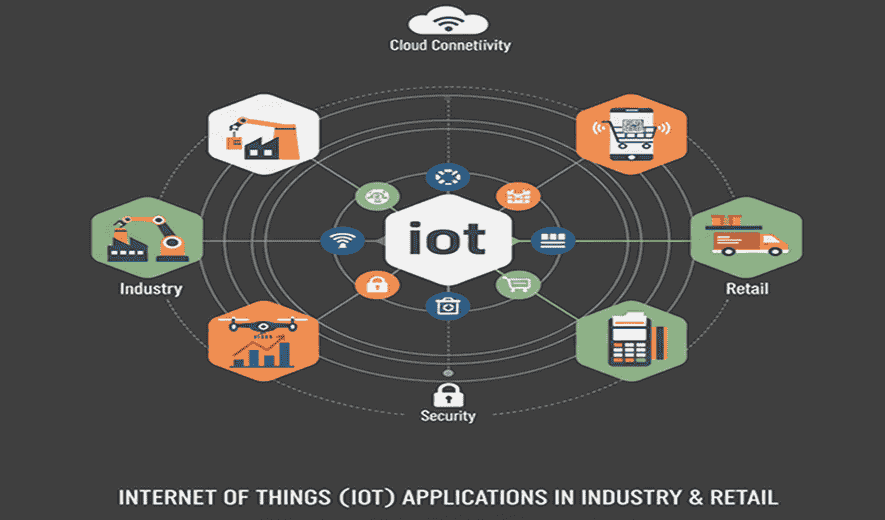
Internet of Things (IoT) Applications in Industry & Retail
In industrial and retail settings, the Internet of Things (IoT) is revolutionizing business models by creating interconnected ecosystems of smart devices, sensors, and software. This network enables unprecedented data collection, automation, and real-time visibility, leading to enhanced efficiency, cost savings, and personalized customer experiences.
Applications in industry and manufacturing
IoT's integration into industrial automation, often called the Industrial Internet of Things (IIoT), is a core component of Industry
- Predictive maintenance: IoT sensors embedded in machinery constantly monitor equipment health, measuring factors like vibration, temperature, and performance. This data is analyzed by AI and machine learning to predict potential failures, allowing for proactive maintenance scheduling before breakdowns occur. This minimizes unplanned downtime and extends the lifespan of equipment.
- Real-time monitoring and quality control: Real-time data from IoT devices allows manufacturers to monitor critical parameters like temperature and humidity throughout the production process. Smart cameras and sensors can instantly detect defects or inconsistencies, helping to enforce strict quality standards and reduce waste and product recalls.
- Optimized supply chain and logistics: IoT-enabled GPS trackers and RFID tags offer end-to-end visibility of goods and raw materials as they move through the supply chain. This includes tracking assets in warehouses, monitoring conditions of sensitive cargo (e.g., cold chain management), and optimizing delivery routes based on real-time traffic and weather data.
- Worker safety and productivity: Wearable IoT devices can monitor the location and vital signs of employees, particularly in hazardous environments. Sensors can also detect unsafe conditions, such as gas leaks or abnormal temperature fluctuations, and trigger automated emergency responses. By automating repetitive tasks, robots can free up human workers for more complex roles, improving both safety and productivity.
- Energy and resource management: IoT sensors monitor real-time energy consumption, water usage, and waste generation. Automated systems can adjust lighting and HVAC based on occupancy and ambient conditions, helping to reduce operational costs and meet sustainability targets.
Applications in retail
IoT in retail is transforming the brick-and-mortar shopping experience and streamlining back-end operations.
- Smart inventory management: Smart shelves with weight sensors and RFID tags provide real-time inventory visibility. This automatically detects low stock levels or misplaced items, alerting staff to restock and preventing overstocking. RFID tracking of products from warehouse to checkout also helps combat theft.
- Personalized customer experiences: Retailers can use IoT-enabled technology, such as Bluetooth beacons and in-store Wi-Fi tracking, to analyze customer foot traffic and dwell time. This data enables personalized marketing by sending targeted promotions and product recommendations directly to a customer's smartphone based on their location and interests.
- Enhanced in-store navigation and layout optimization: Location-based services help customers navigate large stores with interactive maps via a mobile app. The data collected on customer movements also provides retailers with heat maps, revealing high-traffic areas and allowing them to optimize product placement and store layout for maximum engagement and sales.
- Automated checkout and contactless payment: IoT solutions can create frictionless checkout experiences. Examples include "Just Walk Out" technology used by Amazon Go, which uses cameras and sensors to automatically track and charge items to a customer's account, eliminating lines. Self-checkout kiosks and smart carts further accelerate the payment process.
- Omnichannel integration: IoT helps bridge the gap between a retailer's online and physical stores. Customers can check real-time stock availability online and then go to the physical store to complete their purchase, creating a cohesive and satisfying shopping journey.
